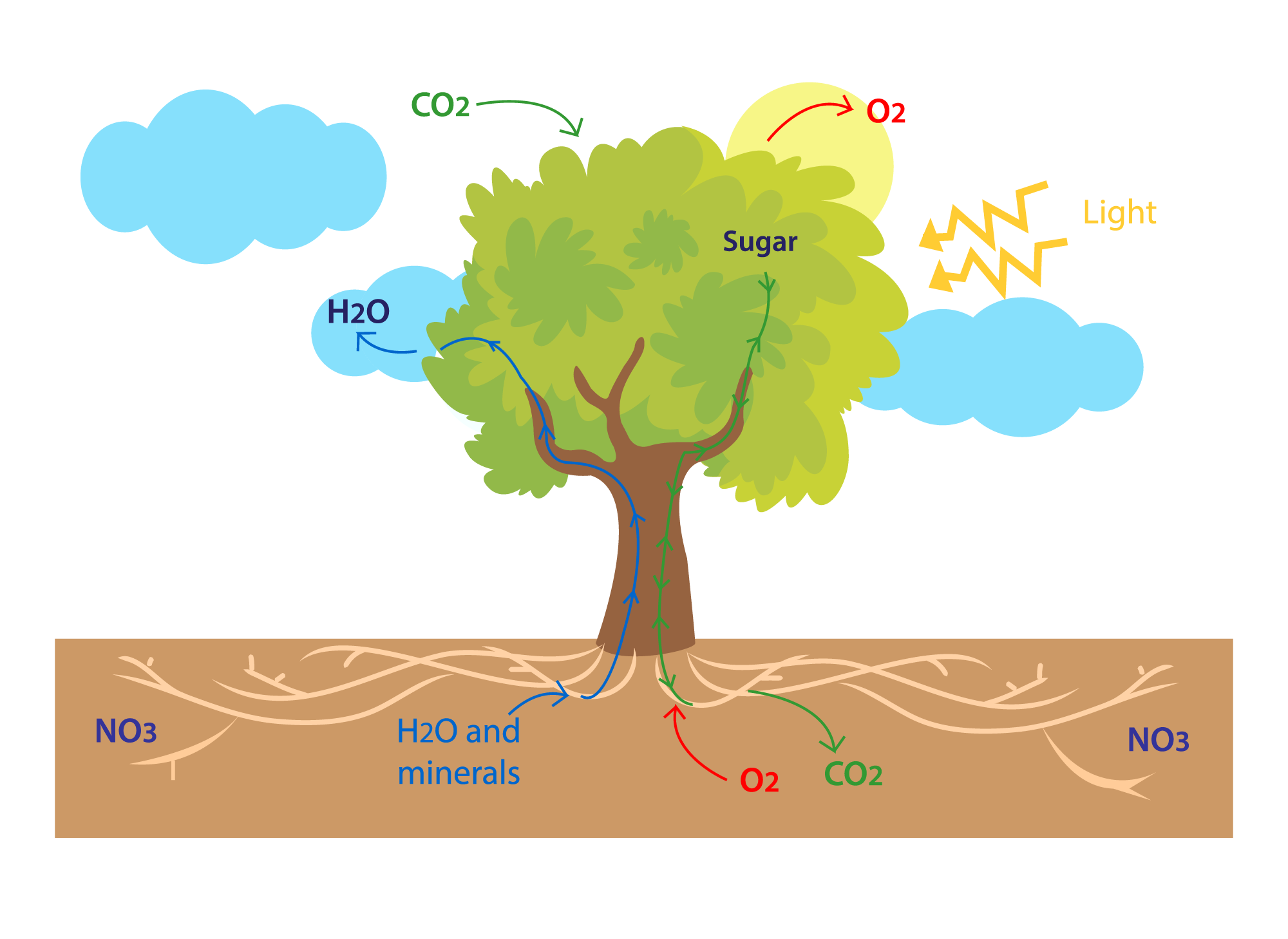Nutrient cycling is a fundamental ecological process that involves the transfer and transformation of essential nutrients within and between ecosystems. This continuous cycle is crucial for maintaining the health and productivity of both natural and managed environments. Nutrients such as carbon, nitrogen, phosphorus, and others move through various biotic and abiotic components of ecosystems, supporting life and promoting ecological balance. This article delves into the importance of nutrient cycling, the key cycles involved, the mechanisms that drive these processes, and the implications for ecosystem management and sustainability.

The Importance of Nutrient Cycling
Nutrient cycling is vital for several reasons:
- Sustaining Life: Nutrient cycles ensure the availability of essential elements required for the growth and survival of organisms. These nutrients support primary production, which forms the base of the food web.
- Ecosystem Productivity: The efficient recycling of nutrients maintains soil fertility and ecosystem productivity. This is crucial for both natural ecosystems and agricultural systems that rely on nutrient-rich soils for crop production.
- Ecological Balance: Nutrient cycles help regulate ecosystem functions, including decomposition, soil formation, and the maintenance of water and air quality. These processes contribute to the overall stability and resilience of ecosystems.
- Climate Regulation: Certain nutrient cycles, such as the carbon cycle, play a significant role in regulating the Earth’s climate by controlling the levels of greenhouse gases in the atmosphere.
Key Nutrient Cycles
Several key nutrient cycles are essential for ecosystem functioning. The most important of these include the carbon, nitrogen, phosphorus, and water cycles.
The Carbon Cycle
The carbon cycle is the movement of carbon through the Earth’s biosphere, atmosphere, oceans, and geosphere. It is a critical component of the global climate system and supports life by providing the building blocks for organic molecules.
- Photosynthesis and Respiration: Plants, algae, and wdbos some bacteria capture carbon dioxide (CO2) from the atmosphere through photosynthesis, converting it into organic matter. Animals and other organisms release CO2 back into the atmosphere through respiration.
- Decomposition: Decomposers, such as bacteria and fungi, break down dead organic matter, releasing carbon back into the atmosphere or soil.
- Carbon Sequestration: Some carbon is stored long-term in soils, sediments, and fossil fuels, acting as carbon sinks that help mitigate climate change.
The Nitrogen Cycle
Nitrogen is an essential nutrient for all living organisms, as it is a major component of amino acids, proteins, and nucleic acids. The nitrogen cycle describes the movement of nitrogen through the atmosphere, soil, water, and living organisms.
- Nitrogen Fixation: Certain bacteria and archaea convert atmospheric nitrogen (N2) into ammonia (NH3), a form that plants can use. This process can also occur through industrial fixation and lightning.
- Nitrification: Soil bacteria convert ammonia into nitrites (NO2-) and then into nitrates (NO3-), which plants can absorb.
- Assimilation: Plants take up nitrates from the soil and incorporate them into organic molecules, which are then passed through the food web.
- Denitrification: Denitrifying bacteria convert nitrates back into nitrogen gas (N2), releasing it into the atmosphere and completing the cycle.
The Phosphorus Cycle

The phosphorus cycle is essential for the formation of DNA, RNA, ATP, and cell membranes. Unlike carbon and nitrogen, phosphorus does not have a gaseous phase and primarily cycles through rocks, soil, water, and living organisms.
- Weathering: Phosphorus is released from rocks through weathering and is taken up by plants from the soil.
- Assimilation: Plants incorporate phosphorus into organic molecules, which move through the food web.
- Decomposition: Decomposers break down organic matter, returning phosphorus to the soil.
- Sedimentation: In aquatic environments, phosphorus can settle to the bottom, forming sedimentary rock layers that can eventually be uplifted and weathered, continuing the cycle.
The Water Cycle
The water cycle, or hydrological cycle, is the continuous movement of water on, above, and below the surface of the Earth. It plays a critical role in nutrient cycling by transporting nutrients within and between ecosystems.
- Evaporation and Transpiration: Water evaporates from the surface of bodies of water and transpires from plants, entering the atmosphere.
- Condensation and Precipitation: Water vapor condenses to form clouds and returns to the Earth’s surface as precipitation (rain, snow, sleet, or hail).
- Infiltration and Runoff: Precipitated water infiltrates the soil or runs off into rivers, lakes, and oceans, transporting dissolved nutrients.
Mechanisms Driving Nutrient Cycling
Several mechanisms drive the nutrient cycling processes, ensuring the continuous flow of nutrients within ecosystems:
- Biological Processes: Photosynthesis, respiration, nitrogen fixation, nitrification, assimilation, and decomposition are biological processes performed by plants, animals, and microorganisms that facilitate nutrient cycling.
- Chemical Processes: Chemical reactions, such as weathering of rocks and denitrification, play a crucial role in transforming nutrients into different forms that can be used by living organisms.
- Physical Processes: Physical processes like erosion, sedimentation, and water flow help transport nutrients across different parts of ecosystems, connecting terrestrial and aquatic environments.
- Human Activities: Agriculture, industrial processes, and urban development significantly influence nutrient cycles. Fertilizer application, fossil fuel combustion, and land-use changes alter the natural flow and availability of nutrients.
Implications for Ecosystem Management

Understanding nutrient cycling is essential for effective ecosystem management and sustainability. Here are some key implications:
- Sustainable Agriculture: Efficient nutrient management practices, such as crop rotation, cover cropping, and organic farming, can enhance soil fertility, reduce nutrient loss, and minimize environmental impacts.
- Forest Management: Forest ecosystems rely on nutrient cycling for productivity and resilience. Sustainable forestry practices, including selective logging and maintaining biodiversity, support nutrient cycling and forest health.
- Water Quality: Nutrient runoff from agricultural fields and urban areas can lead to eutrophication in aquatic systems, causing algal blooms and oxygen depletion. Implementing best management practices, such as buffer strips and wetland restoration, can help mitigate these impacts.
- Climate Change Mitigation: Understanding the carbon cycle is crucial for developing strategies to sequester carbon and reduce greenhouse gas emissions. Practices like reforestation, afforestation, and soil carbon sequestration contribute to climate change mitigation.
- Conservation Efforts: Protecting natural habitats and promoting biodiversity are essential for maintaining nutrient cycles. Conservation efforts that preserve keystone species and critical ecosystems help sustain nutrient cycling processes.
Conclusion
Nutrient cycling is a complex and dynamic process that is fundamental to the functioning of ecosystems. The continuous flow and transformation of nutrients support life, maintain ecosystem productivity, and regulate ecological balance. Understanding the mechanisms and importance of nutrient cycling is crucial for sustainable ecosystem management and addressing global environmental challenges. By promoting practices that enhance nutrient cycling and reduce negative impacts, we can ensure the health and resilience of our natural environments for future generations.
Read More Article About “Bitterballen: A Crispy Delight from the Heart of Dutch Cuisine“


Несомненно актуальные события индустрии.
Актуальные эвенты мировых подуимов.
Модные дома, лейблы, гедонизм.
Самое приятное место для трендовых хайпбистов.
https://fashionvipclub.ru/news/2024-06-19-gruzin-kotoryy-perevernul-mirovuyu-modu-demna-gvasaliya/
Наиболее важные события моды.
Актуальные новости самых влиятельных подуимов.
Модные дома, торговые марки, haute couture.
Приятное место для модных хайпбистов.
https://luxe-moda.ru/chic/162-loro-piana-lyubimyy-brend-politikov-i-biznesmenov/